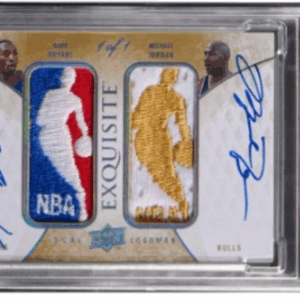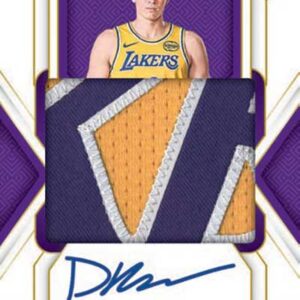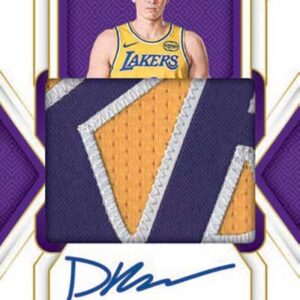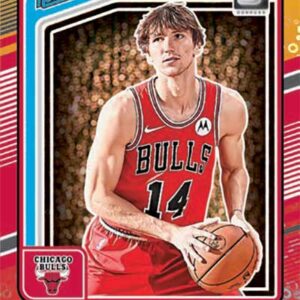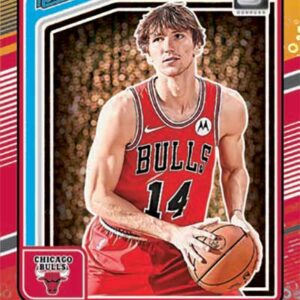In the heart of New York City, where art frequently intertwines with everyday life, riding the subway might typically provide little more than a commute. Yet for Phil Imbriano, a senior designer at Topps, it became a flashpoint of inspiration. As the rhythmic clatter of train tracks hummed beneath him, his eyes alighted on an unexpected muse: a red-and-silver badge nestled discreetly in the corner of a subway car. Its sleek curvature and bold lines resonated with him in a captivating way, compelling him to capture an impromptu photo.
By the time Imbriano reached his desk at Topps headquarters, those lines danced within his imagination, germinating into sketches that would eventually blossom into the new face of the 2025 Topps Series 1 baseball cards, which proudly debut today.
“I love drawing inspiration from the minutiae of daily life,” Imbriano mused. “It could be anything—buildings, signs, or yes, even the most innocuous subway motif. Taking pictures enables me to reference these sparks later. You never know which tiny observation might catalyze something monumental.”
The distinguished design for this year’s cards teases out two decidedly audacious lines: one sweeping majestically up the left flank, another caressing the top of each card. Echoes of the esteemed 1982 Topps set resonate therein, albeit with a twist of modernity—these lines are vibrantly color-matched to each team, lending the design an integrative, aesthetic harmony.
Interestingly, this nod to nostalgia was serendipitous. Imbriano originally drew upon the woodgrain allure inherent in the vintage 1962 and 1987 collections. “The ’82 homage was a serendipitous discovery,” he revealed with a twinkle in his eye, “but I believe it works because it bends the nostalgia of yesteryears with a contemporary flourish.”
The debut design withstood an intense, in-house vetting process, where Topps designers vigorously submit their concepts for scrutiny and selection. Triumphant over 20 other contenders, Imbriano’s vision emerged as the victor through this rigorous, months-long process. Interestingly, elements from once-rejected designs sometimes reincarnate in future sets; this year, the peripheral zone of the card features a petite field graphic neatly indicating the player’s position—a nod to past conceptual endeavors.
From that fateful subway encounter to the final glorious product, Imbriano crafted no fewer than ten iterations before arriving at the definitive design. “Many people have little grasp of the exhaustive work that precedes the creation of each card,” he remarked, “yet the intricacies and labor involved are fathomless.”
Turning concepts into tangible collectible gems necessitates traversing another critical stage. Post digital finalization, Topps forges physical prototypes, assessing their tactile, aesthetic resonance—a concrete endeavor championed by Clay Luraschi, Topps’ Senior Vice President of Product Development.
“When narrowing down to our final five designs, we dive into the tactile experience, physically printing prototypes and simulating the card-opening ecstasy,” Luraschi elucidated. “This competitive juncture is the linchpin of our annual design calendar, the catalyst for fervent debates and intense scrutiny.”
He added with conviction, “Our team embraces the weighty obligation of this legacy, spanning 74 years of Topps history—from Sy Berger crafting prototypes on his kitchen table to today’s dynamic design odyssey. It’s a significant endeavor punctuated by spirited enjoyment.”
Merely scratching the surface, the compelling base design catalyzes various captivating subsets within Topps Series 1. These include “Future Stars,” “All-Topps Team,” “Training Grounds” (a nod to Spring Training highlights), and “Call to the Hall,” celebrating the illustrious Hall of Fame inductees.
Of particular note is the “City Connect Swatch Collection Autographs,” alongside fan-favorite “Heavy Lumber Autographs.” The triumphant return of “Signature Tunes” marries players with their walk-up song artists, while “First Pitch” hails the celebrities who graced the diamond with ceremonial first throws last season.
For Dodgers aficionados, an enchanting bonus awaits: special base-card variations spotlighting jubilant moments enshrined in memory, epitomized by the ebullient ‘Freddie Dance’—Freddie Freeman’s signature base-reaching hip-sway.
This design also marks the 35th-anniversary homage to the lively 1990 Topps collection, renowned for its bold, vivacious palette. However, anchoring this celebration remains Imbriano’s revolutionary base design—a creative narrative he likens to a movie poster. Each card, infused with its own visual storytelling, aims to captivate collectors, transporting them into worlds spanning beyond the mere emblems of sport.
“Our goal is for someone grabbing a card fifty years from now to be immediately transported back in time by its unique flair,” Luraschi concluded earnestly. “We believe this design embodies that timeless identifiability, truly capturing the spirit of its era.”

